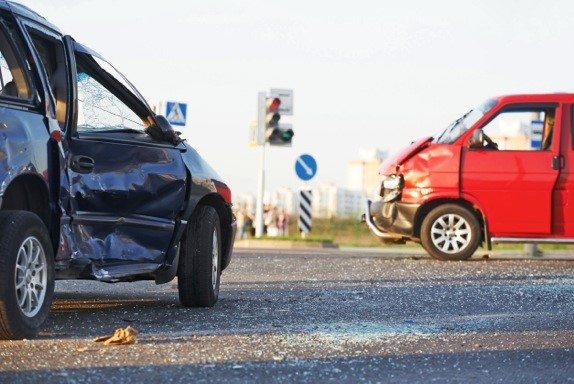Explaining Pure Comparative Negligence in Florida
If you suffer injuries from a car accident that exceed your personal injury protection coverage, you may consider filing a lawsuit if the other driver acted in a negligent manner. Doing this can allow you to hold them accountable for their actions while getting the compensation you need and deserve for your injuries.
Of course, the other driver isn’t just going to take your claim lying down. They will likely do all they can to fight back against your claim. No one wants to admit that they acted negligently and pick up the bill for an auto accident, especially if tens – or even hundreds – of thousands of dollars in medical bills or damages are involved.
One thing that many defendants in personal injury claims do is point the blame right back at you, arguing that you are at fault and demanding that you pay up for the accident. Obviously, you and your attorney should do everything in your power to disprove the defendant’s claims about your responsibility for the accident, but sometimes this doesn’t quite work out.
However, the court isn’t able to place all the blame with you, either. They find that both you and the other driver acted in ways that led to the accident.
What happens next?
If two drivers share the blame for an auto accident, the court will proceed based on the state’s laws regarding contributory and comparative negligence.
What Is Contributory Negligence? What Is Comparative Negligence?
Let’s look at an example of a lawsuit that puts both drivers at fault for a car accident. The plaintiff claims that the defendant caused an accident by rolling through a stop sign and continuing forward when they did not have the right of way.
Looks like the defendant is responsible, right? Not so fast. The defendant makes a counter-claim that the plaintiff was on their cell phone and was not able to see the defendant in time to stop or move out of the way.
Not so cut-and-dried now, is it? If both claims can be proven, both parties share a bit of the responsibility. In some states, even partial guilt is enough for the judge to throw out the case entirely. This is the policy according to contributory negligence.
Thankfully, Florida (along with 13 other states) does not operate under the laws of contributory negligence. Instead, our state uses comparative negligence.
To illustrate how it works, let’s go back to the example from above. Based on the facts, both drivers can be found at least partially at-fault for the auto accident. Because of this, the judge will assign each fault a percentage.
For example, the plaintiff may be found 30% at fault while the defendant is found 70% at fault. Those numbers are applied to the damages that the plaintiff originally asked for.
If the plaintiff originally asked for $100,000 and wins the case, they will only receive $70,000 since 30% of the accident was deemed “their fault.”
How Is Your Level of “Fault” Determined?
The judge will look at a wide range of factors to determine the percentage of fault to assign to each driver. Any of the following could be used to determine a driver’s fault and contribution to the accident:
- Speeding
- Running red lights or stop signs
- Failing to use turn signals or proper lights
- Failing to repair break pads or other parts of the car that contributed to the accident
- Driving under the influence of drugs or alcohol
- Texting or other forms of distracted driving
The list goes on and on.
Any evidence collected that can be shown to relate to the accident may be used to determine a driver’s fault. Collecting solid evidence can prevent the case from turning into a “he said, she said” with the potential of reaching an unfair settlement.
Immediately after an accident, collect the accounts of any witnesses. Take note of road conditions, visibility, and weather conditions. Record testimony from the other drivers involved.
In the weeks leading up to the trial, additional evidence can be gathered. Phone records can reveal if the driver was texting while driving. Testimony from an accident reconstruction specialist can help you fill in the blanks in court. There are many possibilities, and hiring a lawyer is your best bet for getting the most thorough evidence.
The bottom line is that you need to think both about the evidence you can use against the other party and about the evidence that may be used against you. A personal injury lawyer will be your best resource throughout an auto accident case. Reach out to us today to learn more about your options and possible outcomes after a car accident.
About the Author:
Andrew Winston is a partner at the personal injury law firm of Winston Law. For over 20 years, he has successfully represented countless people in all kinds of personal injury cases, with a particular focus on child injury, legal malpractice, and premises liability. He has been recognized for excellence in the representation of injured clients by admission to the Million Dollar Advocates Forum, is AV Preeminent Rated by the Martindale-Hubbell Law Directory, enjoys a 10.0 rating by AVVO as a Top Personal Injury Attorney, has been selected as a Florida “SuperLawyer” from 2011-2017 – an honor reserved for the top 5% of lawyers in the state – and was voted to Florida Trend’s “Legal Elite” and as one of the Top 100 Lawyers in Florida and one of the Top 100 Lawyers in the Miami area for 2015, 2016, and 2017.
 What Proposed Changes to Florida PIP Coverage Mean For You
What Proposed Changes to Florida PIP Coverage Mean For You 


















